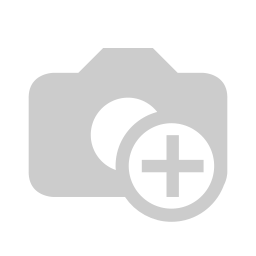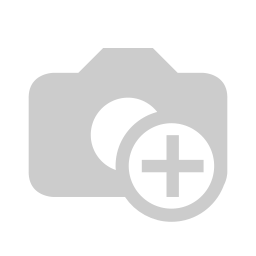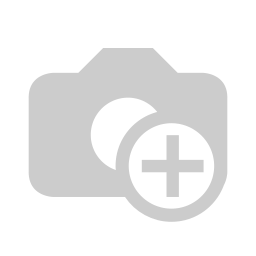What is ad conversion rate?
In today's digital age, businesses have a multitude of advertising channels available to them. From social media ads to pay-per-click campaigns, the opportunities are endless. However, simply running an ad is not enough to drive revenue for your business. It is crucial to track the effectiveness of your ads to understand what is working and what isn't.

Ad conversion rate formula
One key metric for measuring ad effectiveness is the ad conversion rate. Ad conversion rate refers to the percentage of people who click on an ad and then take the desired action, such as making a purchase or filling out a form. It is calculated by dividing the number of conversions by the number of clicks and multiplying the result by 100.
Example:
If an ad receives 1,000 clicks and generates 50 conversions, the ad conversion rate would bd conversion rate?
50/1000*100 = 5%
The ad conversion rate is an important metric for measuring the effectiveness of advertising campaigns and can help businesses optimize their ad spend and targeting strategies to improve their ROI.
Why is ad conversion rate so important?
Ad conversion rate is an important metric because it measures the effectiveness of an advertising campaign in terms of generating desired actions from the target audience.
When someone clicks on an ad, the advertiser's ultimate goal is for that person to take a specific action, such as making a purchase or filling out a form. The ad conversion rate measures the percentage of people who take that desired action after clicking on the ad.

Why is ad conversion rate so important?
By measuring the ad conversion rate in your paid ads campaigns, advertisers can determine how successful their advertising campaigns are at generating revenue or achieving other specific goals. It can help businesses optimize their advertising spend by identifying which ads or channels are performing the best and reallocating resources accordingly.
It can also help advertisers identify any issues with their landing pages or user experience that may be preventing users from converting.
Examples on How sales and ROI can be improved by tracking ad conversion rate
Let's say a company is running an ad campaign for a new product on a social media platform. The goal of the campaign is to generate sales and increase revenue. By tracking the ad conversion rate, the company can monitor the percentage of people who click on the ad and then make a purchase.
Scenario:
If the ad conversion rate is low, the company can analyze the data to identify potential issues that may be preventing users from converting, such as:
- Unclear call-to-action
- Poorly designed landing page
- Issues with Payment process
- Lack of reviews and testimonials
- Issues with delivery options

Boost sales and ROI by tracking ad conversion rate
By navigating what possibly the problem is, the company can then make changes to improve the user experience and optimize the campaign.
For example, if the company discovers that users are dropping off at the checkout stage, they may identify issues with the payment process, such as too many steps or a lack of payment options. By making changes to the payment process, such as streamlining the checkout process and offering more payment options, the company can improve the ad conversion rate and increase sales.
By continuously monitoring and optimizing the ad conversion rate, the company can improve the ROI of the ad campaign, ensuring that their advertising spend is generating the desired results. Additionally, as the campaign continues, the company can use the insights gained from tracking the ad conversion rate to improve future campaigns and drive even better results.
Tools for tracking and improving ad conversion rate
There are several tools available to track and improve ad conversion rates. Here are four examples:
Google Analytics
Google Analytics is a popular web analytics tool that allows you to track website traffic and conversions. You can set up conversion tracking to track specific actions on your website, such as form submissions or product purchases. With this information, you can optimize your website and ad campaigns to improve the conversion rate.
A/B testing tools
A/B testing tools, such as Optimizely and VWO, allow you to test different versions of your ads or landing pages to see which performs better. By comparing the conversion rates of different variations, you can identify which elements of your ads or landing pages are most effective and make data-driven decisions to improve your campaigns.
Heat mapping tools
Heat mapping tools are software applications that help businesses visualize user behavior on their websites or mobile apps. These tools track user interactions such as clicks, scrolls, and mouse movements, and generate visual representations of the data in the form of heat maps. Heat maps can help businesses understand how users interact with their website or app, identify areas that are most engaging or problematic, and optimize user experience to improve conversions and drive business growth.

Heat mapping tools
Heat mapping tools, such as Hotjar and Crazy Egg, provide insights into how users interact with your website and can help identify areas where users may be dropping off. By analyzing heat maps and other user behavior data, you can optimize your website and ad campaigns to improve the conversion rate.
Ad management platforms
Ad management platforms, such as Google Ads and Facebook Ads Manager, provide data on ad performance, including conversion rates. By monitoring the performance of your ads and adjusting targeting and bidding strategies, you can improve the conversion rate and maximize ROI.
Best Practices to improve ad conversion rate
To achieve higher ad conversion rates, which will ultimately lead to higher engagement and increased ROI for your advertising campaigns, it is crucial to implement a set of best practices:
- Use clear and compelling messaging
Your ad copy and visuals should be clear, concise, and compelling. Highlight the benefits of your product or service and use strong calls-to-action to encourage users to take action.
- Optimize landing pages
Your landing pages should be designed to convert. Make sure they are relevant to your ad and contain a clear call-to-action. Use A/B testing to test different versions of your landing pages and improve the conversion rate.

Improve ad conversion rate by optimizing landing pages
- Simplify forms and checkout processes
Forms and checkout processes can be a major barrier to conversion. Make sure they are simple, easy to use, and require minimal input from the user.
- Test and optimize
Continuously test and optimize your ads and landing pages to improve conversion rates. Use A/B testing to test different ad copy, visuals, and landing pages. Analyze data and make data-driven decisions to improve your campaigns.

Use A/B testing to optimize ad conversion rate
- Focus on mobile optimization
With more and more users accessing the internet from mobile devices, it's important to ensure your ads and landing pages are optimized for mobile. Make sure your ads are mobile-friendly and your landing pages are responsive and load quickly on mobile devices.












Replies to This Discussion